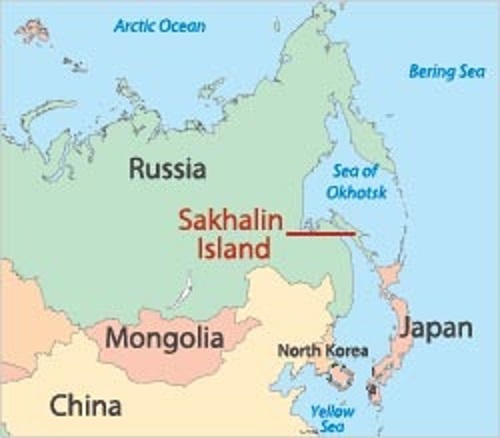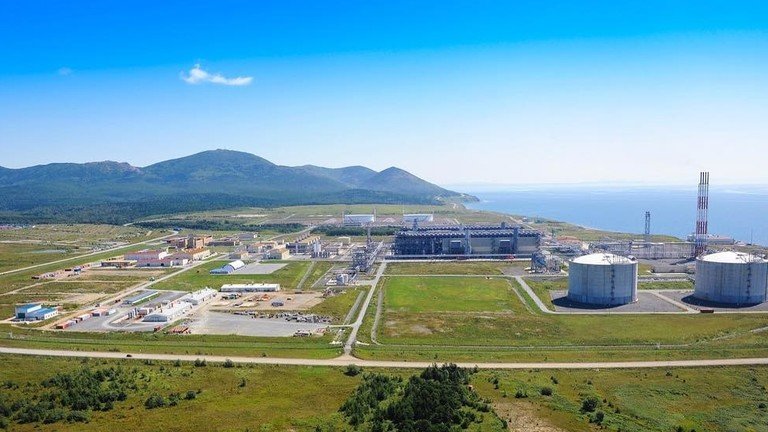
BRICS nations Russia and China jointly develop hydrogen project on Sakhalin Island
An initiative is underway on Russia’s far-eastern island of Sakhalin, with plans for the country’s inaugural green hydrogen installation set to materialize by June’s end, according to Energy News.
The project aims to establish a Hydrogen Engineering Centre at the Special Design Bureau for Automation Equipment for Marine Research (SKB SAMI) research institute.
The Hydrogen Engineering Centre will serve as a pioneering hub for green hydrogen development in Russia. With an emphasis on utilizing Russian-made equipment and renewable energy sources, the project seeks to demonstrate the viability of green hydrogen production and pave the way for future expansion. President Vladimir Putin’s endorsement of the pilot project underscores its strategic importance in Russia’s energy transition.
The experimental green hydrogen installation will harness 30kW of solar photovoltaic (PV) power, highlighting the integration of renewable energy technologies into hydrogen production. Russian-made equipment will be employed, showcasing the nation’s capacity for innovation and self-sufficiency in sustainable energy solutions.
These moves follow the Russian Government’s approved of steps to strengthen the country’s renewable energy position under its Energy Strategy.
The success of the Sakhalin hydrogen test site could mark a significant milestone in Russia’s quest for energy diversification and environmental stewardship. If proven viable, the project holds the promise of establishing a hydrogen plant and facilitating the export of clean fuel to Asia-Pacific nations, bolstering Russia’s position in the global energy market.

Joint Russia-China Sakhalin Island project
Energy News also reported that in September 2023 the Russian nuclear giant Rosatom and Chinese equipment manufacturing powerhouse LS Group Co signed a memorandum of understanding for a partnership focused on the creation of a hydrogen production facility on Sakhalin Island. Energy policy commentators say this could have vast implications for the future of clean energy production.
Vast Potential for Exporting Clean Energy
Crucially, the facility’s scope extends far beyond the borders of Sakhalin. The partners are evaluating the potential to export hydrogen to China, a move that could have profound implications for the region’s energy landscape. With Russia’s vast hydrogen production capabilities and China’s position as a global leader in energy consumption, this collaboration could usher in a new era of cross-border clean energy trade.
The hydrogen produced at the Sakhalin plant is therefore set to be a game-changer. It aligns perfectly with global efforts to transition away from fossil fuels and reduce carbon emissions. Green hydrogen, produced using renewable energy sources, is increasingly seen as a critical component of a sustainable energy future.
Russia’s ambitious vision for hydrogen doesn’t stop at Sakhalin. By 2030, the nation aims to export a staggering 2.2 million tons of hydrogen, raking in an estimated $12.7 billion in revenue. This isn’t just a boost for the Russian economy but also a significant contribution to global efforts to decarbonize.
The Sakhalin region, with its forward-looking Eastern regional hydrogen cluster, is poised to play a pivotal role in Russia’s hydrogen export ambitions. This remote island could become a powerhouse of clean energy production, further cementing Russia’s position in the global energy landscape.

Russia’s Strengthened Legal Framework on Renewable Energy
In recent years Russia has strengthened its legal framework to meet commitments under the international climate conventions. Of particular importance have been the Russian Government’s approval:
- In June 2020 of a new Energy Strategy until 2035. The Strategy declared a major goal for Russia to become the world’s leader in hydrogen production and export. It also established specific export targets of 0.2 million tons by 2024 and 2 million tons by 2030.
- In October 2021 of a series of strategic development initiatives until 2030, including one titled ‘Clean energy (renewables and hydrogen)’ – being a part of the ‘Technological Breakthrough’ section of the said initiatives. The authorities are now developing a federal project to detail the ‘Clean Energy’ initiative.
Overall, as part of its measures to reduce greenhouse gas emissions and implement the Paris Agreement, Russia has begun to develop and regulate clean hydrogen, one of the most important potential sources of clean energy. The following instruments, cornerstones of an extensive legal framework, have now been adopted:
- the Energy Strategy to 2035;
- the Strategy for Low-carbon Development up to 2050;
- the Hydrogen Energy Development Plan and Development Concept; and
- the Law on Limiting GHG Emissions.
Sources:
- Energy News, March 7, 2024. https://energynews.biz/russias-first-green-hydrogen-project-takes-shape-on-sakhalin-island/
- Energy News, September 12, 2023. https://energynews.biz/russia-and-china-join-forces-on-hydrogen-in-sakhalin/
- Global Hydrogen Policy Tracker, accessed May 12, 2024. https://resourcehub.bakermckenzie.com/en/resources/hydrogen-heat-map/emea/russia/topics/hydrogen-developments
- Clifford Chance Legal Briefing, December 2021. https://www.cliffordchance.com/content/dam/cliffordchance/briefings/2021/12/focus-on-hydrogen-russias-energy-and-low-carbon-strategy-up-to-2050.pdf
- Video Tech Revolution, May 10, 2024. https://youtu.be/jitz58oO6JU